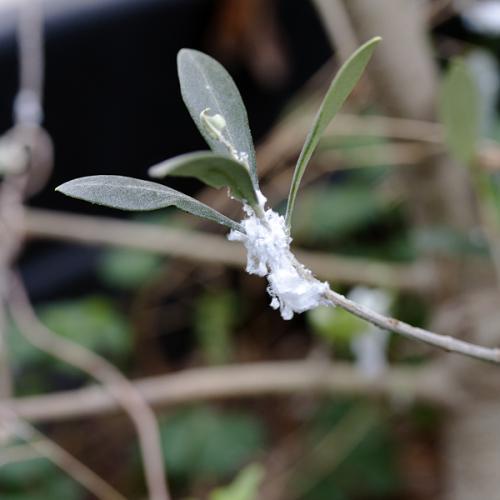
Psilas
WHAT IS AND HOW TO ELIMINATE
Cotton Or Olive Milkweed
Euphyllura Olivina
Pathogen:
Insect
Type:
Risk to the plant:
MILD


DESCRIPTION
WHO CAUSES IT?
Euphyllura olivina is an insect known as olive milkweed, which affects olive trees. The insect goes through several stages of development: egg, larva, nymph and adult. During the larva phase, the insect produces a waxy secretion that accumulates in the tender shoots and flowers, where it feeds. Adults lay eggs on leaves and shoots, especially in spring and fall.
SYMPTOMS
Olive milkweed causes damage to tender shoots and flowers, where it lays eggs and feeds. This can cause a reduction in the productivity and quality of the harvest, as well as a general weakening of the olive tree.
• Damage to tender shoots and flowers.
• Reduction in crop productivity.
• General weakening of the olive tree.
• Presence of a white waxy secretion on the buds and flowers.
• Wasting and wilting of young shoots.




TEMPERATURE AND HUMIDITY
20°C - 30°C
50% - 70%

HOW IS IT SPREAD?
Insect movements, direct contact with infected plants, contaminated pruning tools.

HOW TO REMOVE IT?
Home remedies
There are no home treatments
Chemical treatments
• DELTAMETHRIN 2.5% [EC] P/V
• POTASSIUM SALTS OF FATTY ACIDS C14-C20 48% [EW] P/V
Authorized treatments in organic farming
• POTASSIUM SALTS OF FATTY ACIDS C14-C20 48% [EW] P/V
Insect allies
EFFECTIVE PRODUCTS TO ELIMINATE THIS PEST
Sponsored link
Sponsored link
Sponsored link
Sponsored link
Sponsored link
Sponsored link
Effective against all types of fungi
• Regularly monitor olive trees for signs of early infestation.
• Use traps to monitor the presence of insects.
• Apply specific insecticides during critical periods of activity.
• Encourage the presence of natural predators, such as parasitic wasps.
• Maintain a clean environment free of plant debris to reduce reproduction.
• Carry out regular pruning to allow better air circulation.
• Avoid excessive use of nitrogen fertilizers that can favor the development of the pest.
























